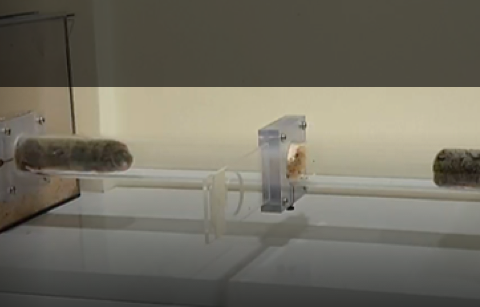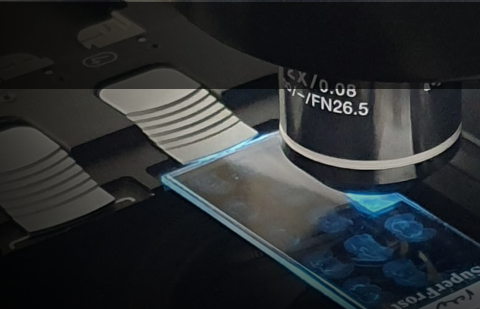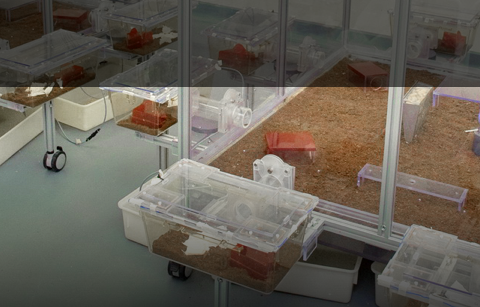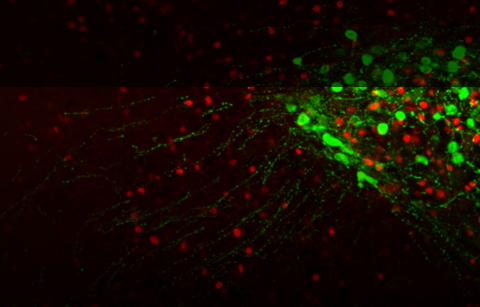In most mammals, the vomeronasal organ (VNO) is a primary chemosensory organ that detects pheromonal signals in the environment. Pheromones, present in urine and different exocrine secretions, provide information about an individual’s social and reproductive status and can elicit innate immediate behavioral responses.
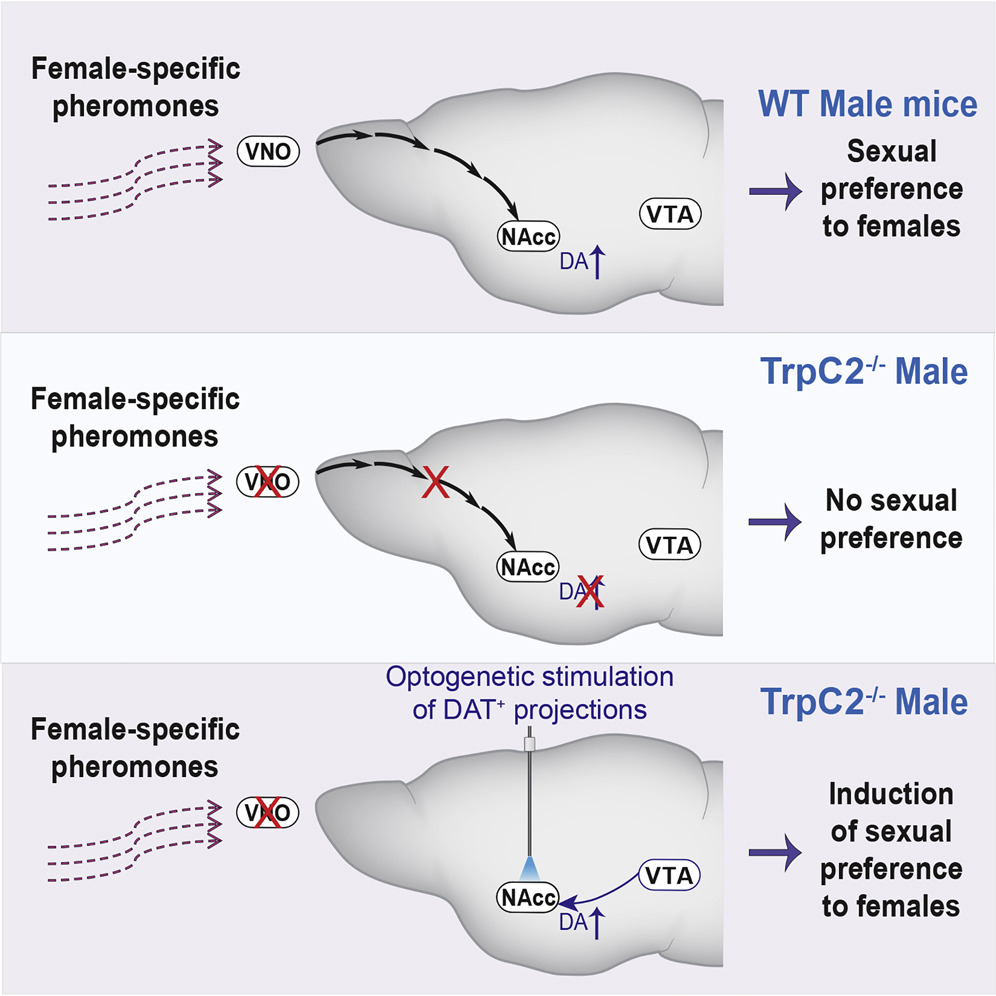
Genetic ablation of the gene encoding TrpC2, an ion channel essential for VNO signaling, has provided a robust experimental system to directly investigate the repertoire of VNO-mediated sensory responses and behaviors. It has been shown that TrpC2 knockout (TrpC2-/-) male mice exhibit profound defects in inter-male aggression and in their ability to distinguish between males and females, displaying mating behavior towards both with equal frequency.
Remarkably, TrpC2-/- females display reduction in female-specific behaviors, while adopting a male-typical pattern of mating behaviors. (Kimchi et al 2007).
We have shown that TrpC2-/- males can actually distinguish male from female olfactory stimuli, as they were able to acquire specific aversive association to female odors (Beny & Kimchi 2016). Investigating the role of dopaminergic signaling in mediating VNO-mediated mating behaviors, we were able to restore sexual preference of male TrpC2-/- mice towards females by optogenetics, repairing their dopaminergic response to encountering a receptive female (Beny-Shefer et al., 2017).
In wild-derived mice, we have shown that deletion of the TrpC2 gene resulted in ablation of inter-female and pup-directed aggression, in sexually-naïve females (Chalfin et al 2014). In our current research focus, we are investigating the role of VNO-mediated pheromones in behavioral "personalities" within complex groups of wild mice. We have shown that deletion of the TrpC2 gene has completely altered behavioral repertoires within groups, causing males to display more pro-social behaviors, and causing females to display more dominance-related behavior. As a result, the degree of sexual dimorphism in the behavior of wild mice within a group, was substantially attenuated in TrpC2-/- mice (Zilkha et al, 2023).
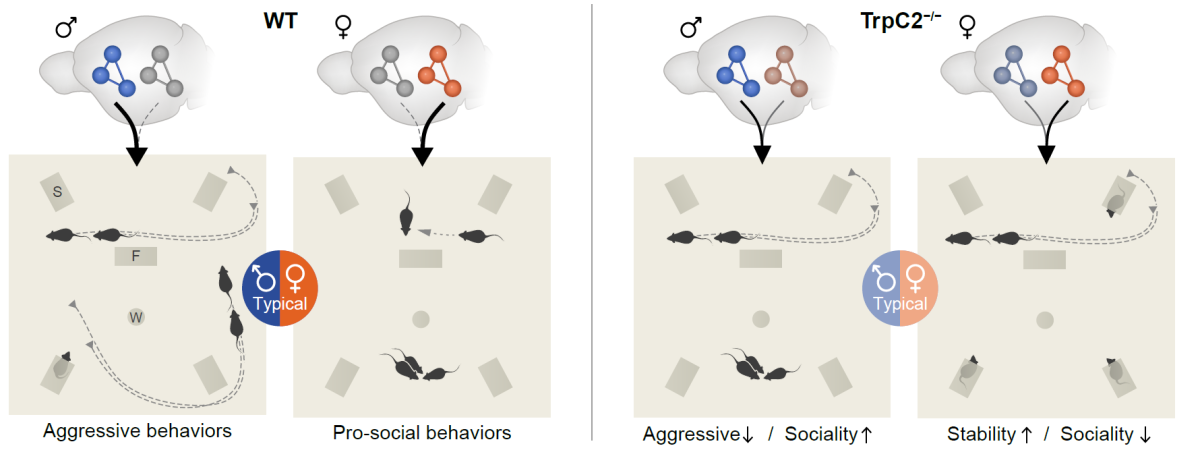
- Beny Y, Kimchi T. 2016. Conditioned odor aversion induces social anxiety towards females in wild-type and TrpC2 knockout male mice. Genes, Brain and Behavior 15: 722-32
- Beny-Shefer Y, Zilkha N, Lavi-Avnon Y, et al. Nucleus Accumbens Dopamine Signaling Regulates Sexual Preference for Females in Male Mice. Cell Rep. 2017;21(11):3079-3088. doi:10.1016/j.celrep.2017.11.062
- Chalfin L, Dayan M, Levy DR, Austad SN, Miller RA, et al. 2014. Mapping ecologically relevant social behaviours by gene knockout in wild mice. Nature communications 5: 4569
- Kimchi T, Xu J, Dulac C. 2007. A functional circuit underlying male sexual behaviour in the female mouse brain. Nature 448: 1009-14

